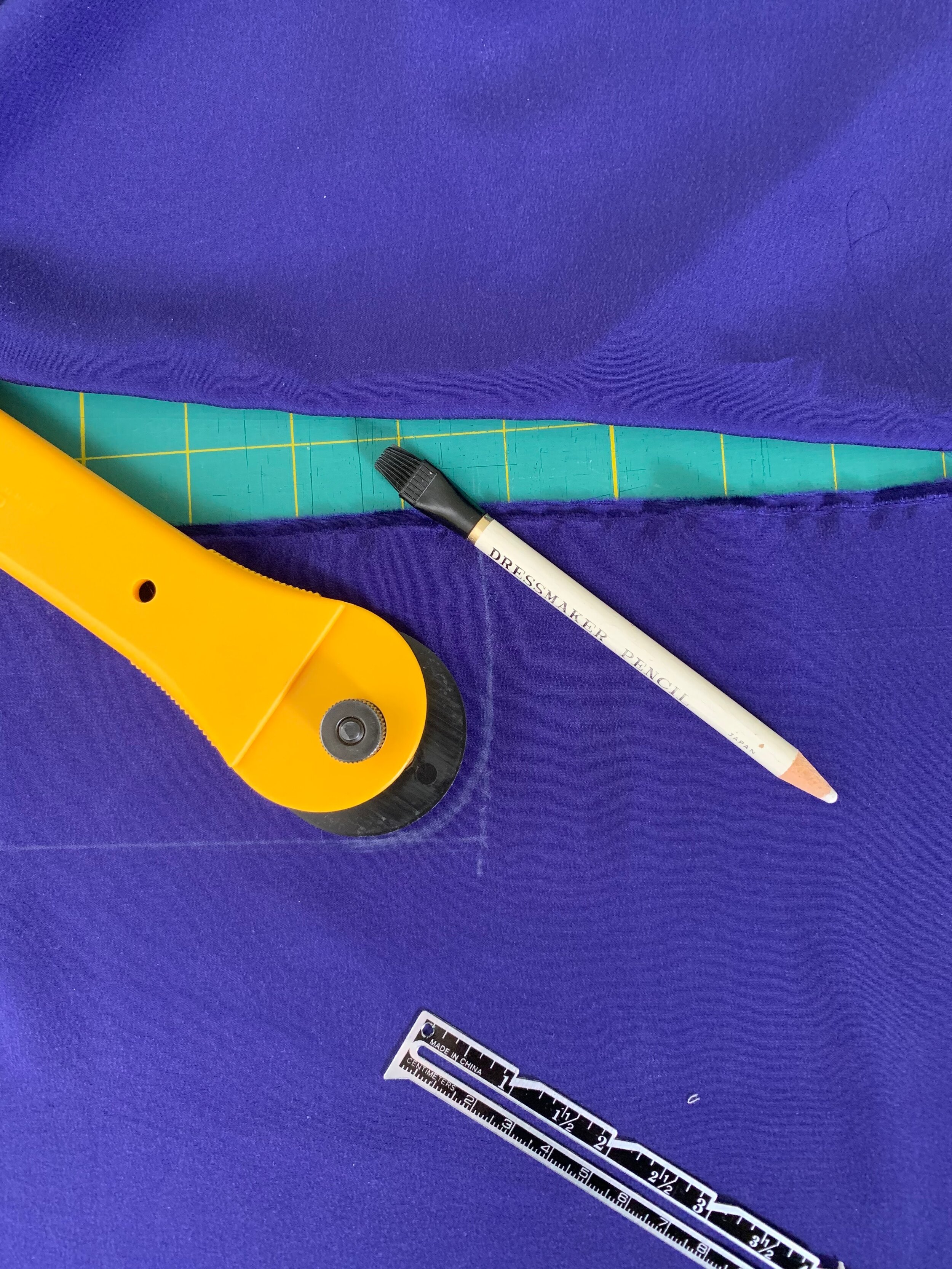Cendre top- improving sustainability and international relations
/I had great intentions to improve my sustainability efforts by making a zero waste pattern for quite some time- yet I never seemed to quite get around to it until inspiration came from across the border- Canada!. .
An Instagram challenge suggested completing a sewing project with a friend, so I reached out to Hélène- @hportemanteau -who hails from Canada. I follow charming Hélène on Instagram and we have exchanged messages. Also, I admit I am a bit of a Canada fan girl- Banff, the genuinely friendly people, Joni Mitchell, maple syrup, etc. I contacted Hélène and proposed improving the Minnesota-Montreal or US- Canada alliance with a joint February sewing project. Hélène agreed and brilliantly suggested we both make a zero waste project. Superb!
Zero waste patterns are patterns that produce a garment with little or no scraps. A zero waste pattern typically has pattern pieces that fit together perfectly so virtually no fabric is wasted when cutting.
Hélène had already done a bit of zero waste pattern research and purchased a few zero waste patterns by Liz Haywood. For the February challenge, we both decided to make the Cendre top for maximum wearing potential and because it had several design variations - although in the end, we both chose the simple bateau neckline.
The Cendre pattern is more similar to a recipe than a traditional sewing pattern. There are no pattern pieces to trace or tape- which can be a relief but also unsettling. You get drawn diagrams and measuring instructions. I had that old adage measure twice, cut once in the back of my head. In fact, I measured probably twenty times. I was a bit nervous without the typical pattern piece security. The pattern fits together like a puzzle and the leftover bits of fabric are used for embellishments, such as a belt or frills for this top. Although, I didn’t end up making any of those.
For my Cendre, I chose a piece of silk from my stash originally purchased from the remnant bin at Treadle Yard Goods -another sustainability win.
To begin, this top is cut across the fabric, with the selvedges at the top and bottom-which took me a minute to get my head around. This also means that you need a perfectly straight cut edge on both ends of the fabric. A tall order! Here is where I thank the fabric fairies, because I was able to tear the silk fabric which is not only super easy and eliminates measuring another ten times ten times- it also guarantees a perfectly straight edge.
Look at the start of a lovely tear! I snipped through the selvedge and tore the fabric for an easy peasy absolutely straight edge. Then, I lined up the two pieces selvedge to selvedge for cutting as instructed. Liz’s instructions and measuring guidelines are very clear. The actual pieces generally require drawing straight lines which is a snap with a straight edge. For the one curve cut under the arm, I used my rotary cutter to trace a nice arc.
The top was easy to put together once I puzzled out the pattern cutting. I made one slight modification- the instructions suggest using bias tape to finish the neck edge, but you need quite a bit of fabric to cut a self bias- and I was dealing with zero waste here. The pattern suggests purchased bias tape but that wouldn’t be compatible with this silk. So I created slim neck facings from the scraps. I added a very light interfacing to the neckline facings- using interfacing scraps of course to stay on theme. I attached the facings and under-stitched them in place. I actually love a nice faced neckline.
For a zero waste pattern, this top packs plenty of style- especially the pretty (always flattering) boat neck and the sleeves. I love how this looks in this swishy silk.
And as an appropriate finale to round out this little Canadian friendship project, my planned mini winter holiday just happened to take place in Grand Marais in Northern Minnesota. While hiking in Grand Portage state park, only an icy river separated me from Canada! You can see Canada right behind me- Bonjour Hélène! Someday the borders will open again and we can meet in real life.








































